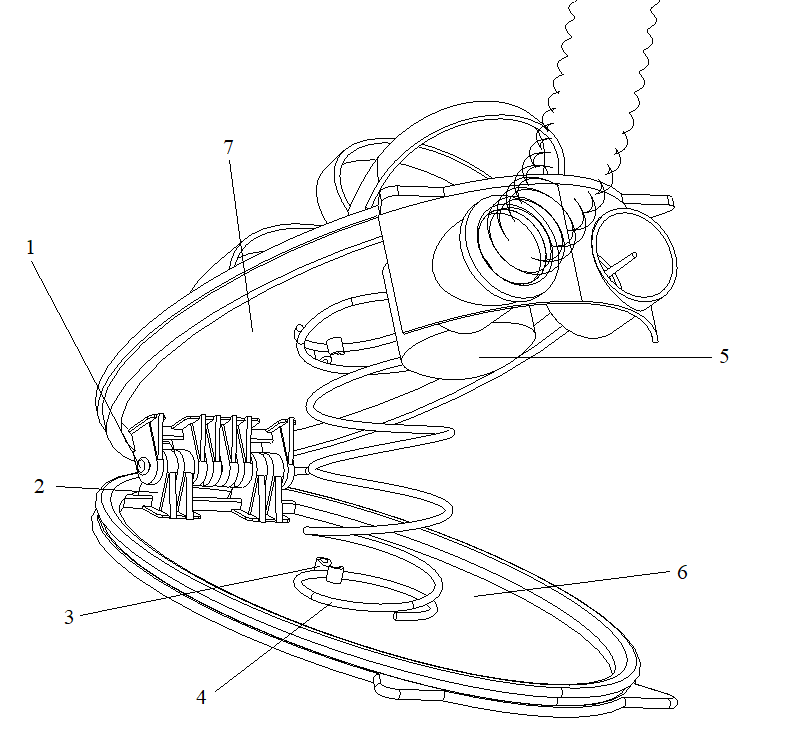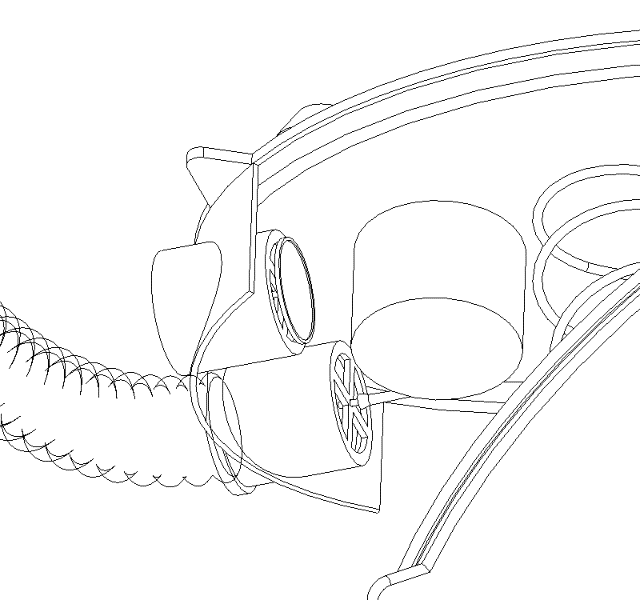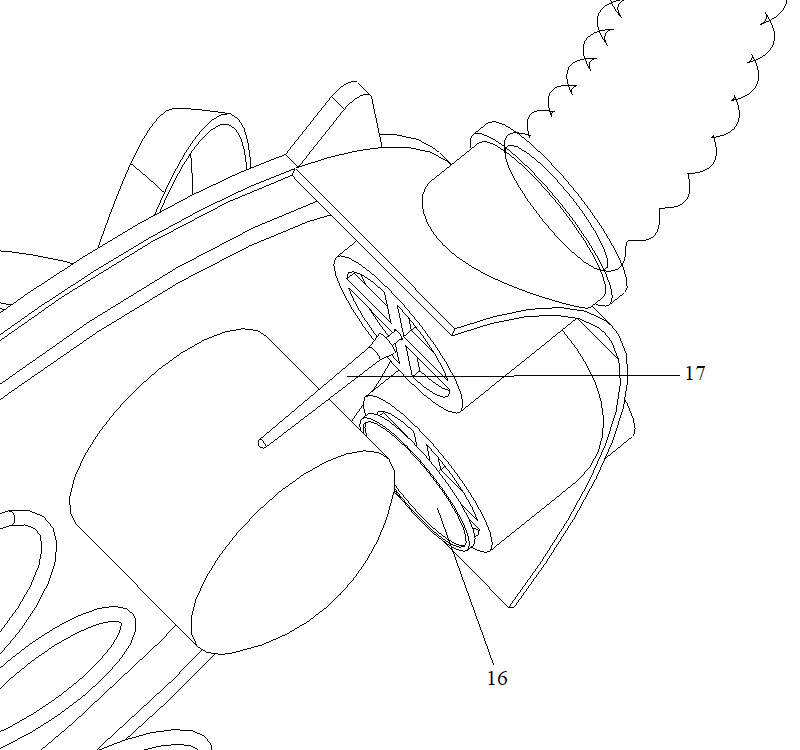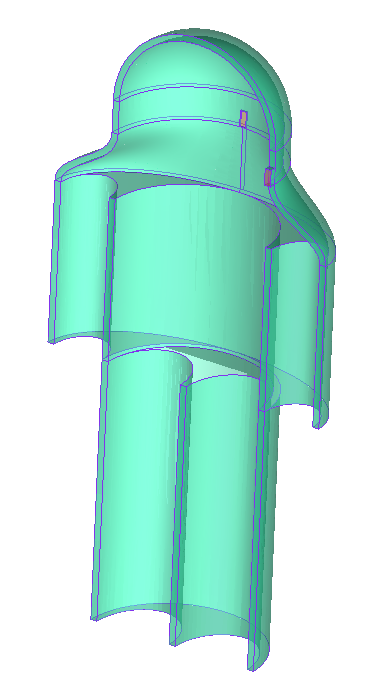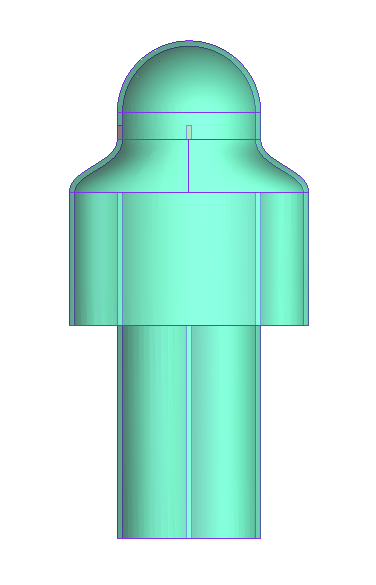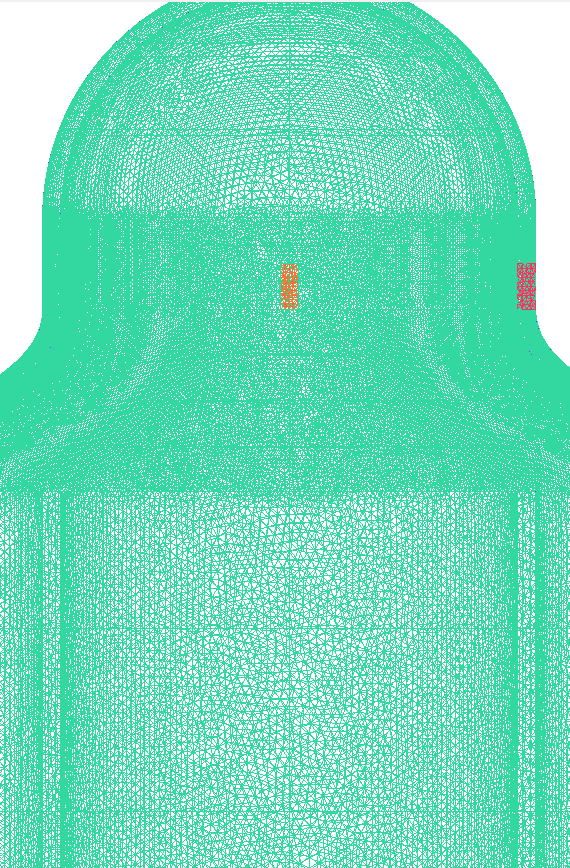简易自主呼吸救生服设计及CFD模拟毕业论文
2020-04-25 19:46:01
摘 要
国内外大量火灾统计数据显示,85%以上的火灾死亡是由烟雾引起的,其中大部分是由吸入烟雾和有毒气体引起的。而自给式呼吸器如空气呼吸器和氧气呼吸器由于成本高、非专业人士难以熟练使用而难以普及。所以设计一种成本低廉、便于穿戴、安全可靠的自主呼吸救生服对火灾初期人员疏散有重要意义。本文提供了一种简易自主呼吸救生服的设计方案,其款式结构主要包括一体式隔热服、头部大眼窗、脚踏式供气器和气体单向阀。该装备主要适用于建筑火灾发生至发展阶段(轰燃前),充分利用下层未受污染空气,隔绝有毒气体及高温高热,有效缓解人员疏散时呼吸困难。根据救生服的构造,本文建立了救生服与人体之间空气间隙的几何模型作为数值模拟的流体域,使用专业的网格划分软件ANSYS ICEM对模型进行四面体网格的划分,根据流体力学的相关知识,分析了流场中的流体特性:定常的不可压缩牛顿流体,以湍流的形式流动。并根据物理守恒定律。确定了本文流场数值模拟的控制方程和湍流模型。使用流体力学模拟软件ANSYS FLUENT对模型进行了数值计算,计算结果显示救生服一分钟内可以提供约53L空气,而一般人在高强度运动下消耗空气量约为40L/min,由此可得本文所设计的自主呼吸救生服可以满足人员在火灾疏散时的呼吸需求。
关键词:一体式救生服;脚踏式供气器;CFD
Abstract
A large number of fire statistics at home and abroad show that more than 85% of fire deaths are caused by smoke. Self-contained breathing apparatus, such as air respirators and oxygen respirators, are difficult to popularize due to their high cost and difficulty in being used by non-professionals. Therefore, designing a self-contained breathing protective clothing with low cost, easy to wear, safe and reliable is of great significance to the evacuation of people in the early stage of the fire. This paper provides a design scheme of simple self-breathing protective clothing. Its style structure mainly includes integrated heat insulation suit, large eye window, pedal air supply and gas check valve. The equipment is mainly suitable for the construction fire to the development stage (before the bombardment), making full use of the uncontaminated air in the lower layer, isolating toxic gases and high temperature and high heat, effectively alleviating the difficulty of breathing when evacuated. According to the structure of the protective clothing, this paper establishes the geometric model of the air gap between the protective clothingand the human body as the numerical simulation of the fluid domain, using the professional meshing software ANSYS ICEM to divide the model into a tetrahedral mesh, according to the fluid mechanics Relevant knowledge, analysis of the fluid properties in the flow field: the constant uncompressible Newtonian fluid, flowing in the form of turbulence. And according to the law of conservation of physics. The governing equations of numerical simulation of flow field in this paper are determined: continuity equation and momentum conservation equation. Based on the flow field characteristics, the standard k-ε turbulence model was selected to simulate the fluid.The calculation results show that the protective clothingcan provide about 53L of air in one minute, while the average person consumes about 40L/min of air under high-intensity exercise. The self-contained breathing protective clothingdesigned to meet the breathing needs of personnel during fire evacuation.
Key Words: integrated protective clothing; pedal-type air supply; CFD
目 录
摘要 I
Abstract II
第一章 绪论 1
1.1自主呼吸救生服研究背景及意义 1
1.2 自主呼吸救生服研究现状 1
1.3 计算流体力学数值模拟方法的研究 2
第二章 自主呼吸救生服的设计 4
2.1救生服的设计因素 4
2.2救生服面料的选用 5
2.3救生服的款式结构 5
2.3.1主体结构 5
2.3.2脚踏式供气器 8
第三章 防火救生服内气流CFD分析 10
3.1 CFD简介 10
3.1.1 CFD概述 10
3.1.2 CFD软件FLUENT 10
3.1.3 CFD的求解过程 11
3.2网格划分 13
3.3流体分析 15
3.4数学模型 16
3.5边界条件 18
3.6模型的求解和分析 19
第四章 结论与展望 22
4.1总结 22
4.2展望 22
参考文献 24
致谢 27
第一章 绪论
1.1自主呼吸救生服研究背景及意义
国内外大量火灾实例统计表明,烟气是人们在火灾事故中死亡的主要因素,火灾中85%以上的死亡是由于吸入了火灾烟气中的大量有毒有害气体导致的[33]。烟气中含有大量毒性气体,如CO和HCN,还有卤化氢(HCI~HBr)等刺激性毒物,进入人体后会导致人员体能丧失,行动迟缓,降低运动机能和大脑的反应灵敏度,这是火灾事故中人员伤亡主要因素[33]。一些火灾救援设备如自给式呼吸器、空气呼吸器和氧气呼吸器由于成本高、非专业人士难以熟练使用而难以普及。所以设计一种成本低廉、便于穿戴、安全可靠的自主呼吸救生服对火灾初期人员疏散有重要意义。
据研究表明,失火空间可被理想的分为双区域模型,分别是上层相对较热的烟气层和下层相对较冷的空气两个区域。烟气层包含大量有毒有害气体,如C、CO、各种氢氧化合物、卤化氢(HCL、HBr)、HCN等。其中CO是火灾烟气主要毒性成分,对人体危害性极大,会导致心血管紊乱和缺氧性中毒。在火灾的发展阶段,CO浓度呈现垂直分布。并且随着距离地面的高度线性增加,随着火源距离的增加指数减小。高温烟雾沿着天花板移动,冷空气沿墙体下部流动,分界线约是墙体长度的0.6 ~ 0.7,且能维持较好的层化结构。在火灾的开始阶段即火势增长阶段,大约有10-20min左右,此阶段空气中氧含量尚未显著降低,能够提供下方的洁净空间,而一个及时有效的疏散约用时13 ~ 15min,所以在设计防火救生服时可充分利用下层未受污染空气,有效缓解人员疏散时的呼吸困难。
1.2 自主呼吸救生服研究现状
在火灾逃生中,防火服是使用者唯一的保护源,应提供足够的保护并且穿着舒适。
相关图片展示:
